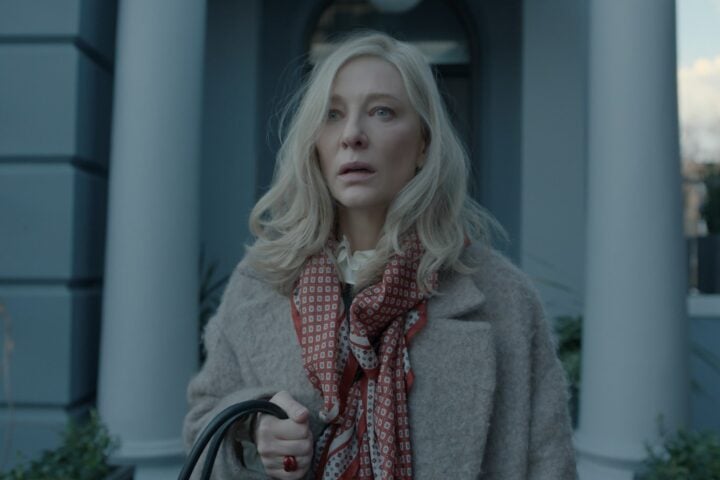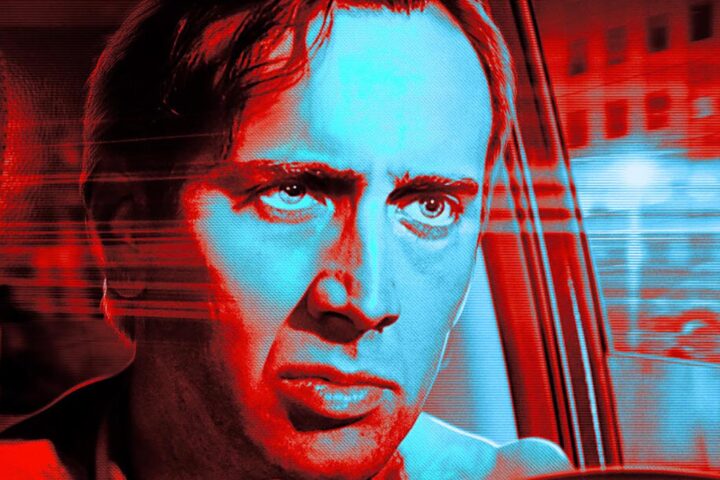Somewhere in the middle of Martin Scorsese’s Hugo, the eponymous young character (Asa Butterfield) dreams of a catastrophe in which a steam train runs over him, careens through the Gare Montparnasse railway terminal, and takes a nosedive into the street outside. While it isn’t made clear, or mentioned at all after he wakes up, the disaster he dreams about is based on a real crash at the same station that happened in 1895, mere months before the public exhibition of the Lumière brothers’ seminal actuality film Arrival of a Train at La Ciotat.
As the persistent but largely embellished filmic chestnut has it, audience members who first witnessed the Lumières’ cinematographic train fled the screening room in Paris in a panic, reacting as if they were in real danger of being run over. If you “print the legend” regarding these perhaps apocryphal, panicking spectators, it’s not too much of a strain to speculate that images of the Montparnasse disaster were still fresh in the minds of said attendees.
That’s just one Easter egg to extract from Hugo, a film that’s constructed of almost nothing but Easter eggs. Another in a decade-long string of disappointing pictures from the once-mighty Goodfellas director, Hugo is a crushingly pedestrian paean to “the magic of the movies” that, in its few shining moments, plays like a speculative film called A Personal Journey with Martin Scorsese Through Silent Movies. For the most part, it’s imbued with the kind of limp, seal-of-approval myth-making that Scorsese would once upon a time have crossed the street to avoid in films such as The King of Comedy, The Age of Innocence, and New York, New York.
Ever since Bringing Out the Dead, his last truly strange film, it’s started to become more and more challenging to figure out the measure of Scorsese’s personality in the framework of each film. From a content point of view, it’s easy: You have his salute to Val Lewton’s emotionally rich spookfests with Shutter Island, and his tribute to the royalty of classical Hollywood and mid-century American genius in The Aviator. Then there’s Gangs of New York, Scorsese’s years-in-the-making passion project, and The Departed, a little something for fans of the bad ol’ days of his ultra-violent gangster pictures. Hugo filters the admittedly righteous Film Foundation agenda into a Polar Express-style kiddie cinema-ride. Sadly, like the other post-millennium fiction films, there’s the nagging feeling that he doesn’t believe a frame of it.
Broadly speaking, Hugo is two films in one. There’s the one about “the adorable little moppet who warms the heart of the grumpy old man,” a tradition dating back to Claude Berri’s The Two of Us and Jan Sverák’s Kolya. By itself, this film would get a pass from no critic living above ground. But this is Scorsese, so there’s the other layer: old movies, cinema, celluloid, when the lights go down, Chaplin, Keaton, Griffith, Louise Brooks, Feuillade, forever and ever amen. If you deflected the “moppet” business, this ought to be armor-piercing stuff.
Speaking for ourselves, we’re wild about Georges Méliès, not just for all that stuff about him being the grandfather of movie magic or special effects. Being first at anything—often a questionable proposition to begin with—doesn’t make an artist great, it just makes them first. Nor is Méliès great just because he made in-camera splices and rigged pyrotechnics to make it easy to believe a horde of skeletons went up in smoke when struck by swords. Or that Smashing Pumpkins video. Like only a few filmmakers in any era, the peculiar quality of his work, the intangible spirit that makes his mise-en-scène feel just a little bit more electric than that of his contemporaries (or the putative heirs to his legacy), concerns qualities of rhythm and image composition that he managed to sustain across hundreds of short films.
Scorsese knows the lay of this land very, very well. In A Letter to Elia, a deceptively modest essay film (co-directed by Kent Jones) about Elia Kazan that is nevertheless, compared to his feature-film output over the last decade, a white-hot ball of passionate cinephilia, Scorsese persuasively, patiently, and cogently argues for the auteur status of the controversial figure through carefully chosen clips and precise, descriptive language. With Hugo, the sarcophagus of a genial, $150 million panorama of gooey marzipan really doesn’t accommodate such dissident impulses as examining and questioning and peering behind the curtains.
At this point, the reader may ask, “Why must you prosecute the film on charges of what it isn’t, why can’t you evaluate it for what it is?” Well, okay, but what is it, exactly, besides a big hulking wad of vague-feeling “about the magic of the movies,” a suspiciously unexamined phrase, as has been consistently noted in enthusiastic and grudgingly respectful reviews alike? What happens when you start pulling at the unsatisfactory stitching, like the overdetermined pathology (and unfunny clowning) of Sacha Baron Cohen’s station inspector, the insoluble emotions (Upset About the Past, Gazing in Wide-Eyed Wonder, Near Tears), the pointlessly protracted climax disguised as a Harold Lloyd homage, and so on? And what’s up with that What Lies Beneath-ish moment where there seem to be ghost shoes walking over Chloë Grace Moretz’s face?
Hugo’s celebration of Méliès doesn’t celebrate form. Rather, it celebrates celebration, as the film gives itself a standing ovation for giving one. All of which boils down to conspicuous consumption by another name. Even if you excuse the film based on its inoffensiveness, isn’t Toby Tyler, or Ten Weeks with a Circus a little inadequate as a prism to refract the wonders of the early-cinema pioneer into the upturned gaze of contemporary viewers?
Image/Sound
Hugo’s sharp digital textures and orange- and teal-heavy color balance look crystalline on Arrow Video’s 4K UHD disc. Close-ups reveal minute details on faces and objects, while master shots show a noticeable uptick in clarity compared to the 2012 Paramount Blu-ray. There are instances where the discrepancy between physical objects and CGI is more easily spotted on this release, but in many ways this plays into the film’s deliberate flaunting of artificiality. The 7.1 DTS-HD audio track is an immersive wonder, doing just as much to add three-dimensionality to the train-station setting as the cinematography. The constant clatter of commuters bustling to and fro amid the hissing of steam engines and the barking yelps of station attendants reading announcements fill every channel, with Howard Shore’s score remaining clear at all times. Likewise, dialogue is crisp and legible amid the din of crowds.
Extras
Arrow has put together possibly the most loaded set of extras for a home-video release of one of Martin Scorsese’s films. Filmmaker Jon Spira, who helped to translate and reissue Georges Méliès’s autobiography, supplies both an audio commentary and a brief video essay that abound in copious details about the French director’s life and work and how Scorsese’s film narratively and aesthetically honors his contributions to cinema history. Critic and filmmaker Scout Tafoya contributes a video essay of his own arguing for the film as an unlikely passion project for Scorsese, namely as his most direct cinematic address on the need for film preservation. An interview with film journalist Julien Dupuy offers further details about Méliès’s life, while Scorsese biographer Ian Christie discusses visiting the set during Hugo’s production.
The most substantial extras here are a trio of newly conducted interviews. Author Brian Selznick discusses at length his source novel and the nature of his collaboration with Scorsese and screenwriter John Logan, while composer Howard Shore discusses the unique aspects of planning music with the director. Best of all is a lengthy talk with cinematographer Robert Richardson, who exhaustively covers the exciting challenges of shooting the film in 3D and how he and Scorsese had to learn entirely new techniques with prototype cameras. Finally, a booklet contains an essay by critic Farran Smith Nehme that extols the film’s aesthetic virtues as well as its moral to children about the importance of valuing art older than themselves—a vital proposition in an era where viewers are encouraged more than ever to treat art as content.
Overall
Arrow Video’s three-disc presentation of Hugo boasts a gorgeous 4K transfer and extras that are as celebratory of cinematic history and technique as the film itself.
Since 2001, we've brought you uncompromising, candid takes on the world of film, music, television, video games, theater, and more. Independently owned and operated publications like Slant have been hit hard in recent years, but we’re committed to keeping our content free and accessible—meaning no paywalls or fees.
If you like what we do, please consider subscribing to our Patreon or making a donation.




Surely we’re only seeing half the intended movie, without the 3D?